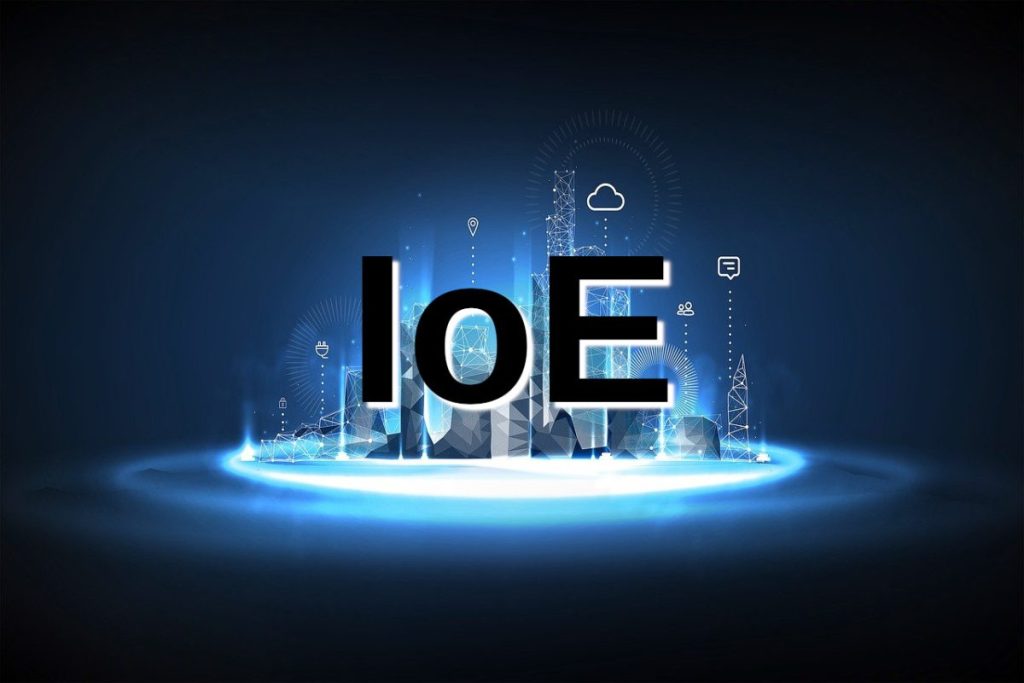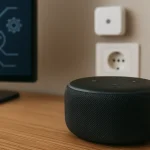The Internet of Things (IoT) has transformed the way we interact with technology. From smart homes and wearable devices to industrial automation, IoT has made our lives more connected than ever before. But as technology evolves, a new concept is emerging—one that takes IoT to the next level. It’s called the Internet of Everything (IoE), and it represents a future where not just devices, but people, processes, and data are seamlessly interconnected.
So, what exactly is the Internet of Everything, and how does it go beyond IoT? More importantly, what kind of world will it create? Let’s explore the next frontier of connectivity and its implications for our daily lives, businesses, and society as a whole.
Understanding the Internet of Everything (IoE)
While IoT focuses on connecting physical devices to the internet, IoE takes a broader approach by integrating four key components:
- People – Humans remain at the center of the network, using technology to enhance decision-making, improve communication, and automate daily tasks.
- Things – Devices, sensors, and machines communicate with each other to collect and process real-time data.
- Data – The vast amounts of information generated by devices are analyzed and transformed into actionable insights.
- Processes – Systems and workflows are optimized using AI and automation, improving efficiency and responsiveness.
In simple terms, IoE isn’t just about “smart devices”—it’s about creating an ecosystem where everything (people, machines, and data) works together in a more intelligent, automated, and predictive way.
How IoE Goes Beyond IoT
1. From Connection to Intelligence
IoT devices collect and share data, but IoE takes it a step further by making real-time decisions based on that data. For example, in an IoT-powered smart city, traffic lights might respond to sensor data to reduce congestion. In an IoE-driven city, the entire transportation system—traffic lights, public transport, emergency response teams—would coordinate in real time, using AI to anticipate and prevent problems before they occur.
2. AI and Automation Take Center Stage
While IoT relies on pre-programmed rules, IoE incorporates advanced artificial intelligence (AI) to make automated decisions without human intervention. Imagine a self-driving car that not only follows a map but also communicates with traffic systems, weather forecasts, and even pedestrians’ smartphones to adjust its route dynamically.
3. Greater Personalization and Adaptability
IoE aims to create hyper-personalized experiences. Your wearable device might not only track your fitness but also communicate with your refrigerator to suggest meals based on your health goals. Your smart assistant could automatically adjust your home’s lighting and temperature based on your mood, detected through biometric sensors.
4. A Unified, Seamless Network
Right now, IoT devices often operate in silos—your smartwatch, smart thermostat, and security cameras might all work separately, even if they’re part of the same “smart home.” IoE envisions a world where all technology communicates and collaborates across industries, platforms, and systems. This interconnectedness will eliminate compatibility issues and create a smooth, integrated experience.
Real-World Applications of IoE
The Internet of Everything is already starting to take shape in various industries. Here are some areas where IoE is making a major impact:
1. Smart Cities That Think for Themselves
IoE-powered cities will feature intelligent traffic management, self-adjusting energy grids, and real-time environmental monitoring. For example, Barcelona has already integrated smart lighting, waste management, and traffic solutions to optimize urban living.
2. Healthcare That Knows You Better Than You Do
Wearable health devices will not only track vital signs but also communicate directly with doctors, hospitals, and pharmacies. A smart insulin pump could adjust dosages based on real-time blood sugar levels, while an AI-driven medical assistant could diagnose illnesses before symptoms even appear.
3. Hyper-Automated Factories
Manufacturing is already benefiting from IoT, but IoE will take automation further. Machines will not just monitor performance but also predict failures, order replacement parts automatically, and adjust production lines based on real-time demand.
4. Smarter, Safer Homes
Your smart home security system won’t just notify you of intruders—it will differentiate between a family member and a stranger, automatically alert authorities if needed, and even lock doors based on facial recognition.
5. Personalized Retail Experiences
IoE will revolutionize shopping by blending online and offline experiences. Imagine walking into a store where your smart glasses display product reviews, your smartphone suggests deals based on your preferences, and checkout is automatic—no lines, no cashiers.
Challenges and Concerns of IoE
While IoE promises a more intelligent and connected world, it also comes with its own set of challenges:
1. Privacy and Security Risks
More connections mean more potential vulnerabilities. If everything is interconnected, a cyberattack on one system could have widespread consequences. Stronger encryption, decentralized networks, and advanced security measures will be essential.
2. Ethical Concerns with AI and Automation
As machines make more decisions, questions arise about control and accountability. Who is responsible when an AI-driven system makes a mistake? How do we ensure that automation doesn’t lead to massive job losses?
3. Infrastructure and Cost
The transition from IoT to IoE requires significant investment in new infrastructure, including 5G networks, edge computing, and AI-driven analytics. Will smaller businesses and developing countries be able to keep up?
4. Data Overload
With billions of devices generating massive amounts of data, storage and processing will become a major challenge. Advanced AI and machine learning will be necessary to filter relevant information from the noise.
What’s Next? Preparing for the IoE Era
The Internet of Everything isn’t just a futuristic concept—it’s already happening. Tech giants like Cisco, IBM, and Google are investing heavily in IoE technologies, and businesses worldwide are beginning to adopt AI-driven automation.
As individuals, we can prepare for this new era by:
- Staying informed about advancements in AI and IoE.
- Prioritizing cybersecurity to protect personal data in an increasingly connected world.
- Adapting to automation by developing skills that complement AI-driven processes.
- Advocating for ethical and responsible AI implementation.
A New Digital Revolution
IoT was just the beginning. The Internet of Everything will reshape the way we live, work, and interact with technology. It promises a world where devices, people, and processes work together in perfect harmony—anticipating needs, making decisions, and optimizing experiences without human intervention.
While challenges remain, the potential benefits of IoE are immense. We are entering a new digital revolution where the physical and digital worlds merge seamlessly. The question is not if IoE will happen, but how we will shape its development to ensure a smarter, safer, and more connected future for everyone.
- Local AI in Smart Homes: What Happens When the Cloud Goes Down?
 In the age of cloud computing and always-connected devices, smart homes have become increasingly dependent on the internet. But what happens when your connection drops? That’s where local AI comes into play. This article explores the benefits, limitations, and future of local AI in smart homes systems—and why it might be the key to a…
In the age of cloud computing and always-connected devices, smart homes have become increasingly dependent on the internet. But what happens when your connection drops? That’s where local AI comes into play. This article explores the benefits, limitations, and future of local AI in smart homes systems—and why it might be the key to a… - Hidden Features of Your Smart TV You’re Probably Not Using — But Should
 Smart TVs have come a long way since their early days. While most people use them for Netflix, YouTube, and the occasional screen mirroring session, today’s smart TVs pack a wealth of features that often go unnoticed. These hidden gems can transform your entertainment experience, improve convenience, and even tighten your home security. In this…
Smart TVs have come a long way since their early days. While most people use them for Netflix, YouTube, and the occasional screen mirroring session, today’s smart TVs pack a wealth of features that often go unnoticed. These hidden gems can transform your entertainment experience, improve convenience, and even tighten your home security. In this… - Is My Smart TV Spying on Me? How to Protect Your Privacy
 Smart TV Privacy – In today’s connected homes, smart TVs are as common as coffee makers — but have you ever wondered if your smart TV is watching you back? It’s not just paranoia. With microphones, cameras, and internet connections, smart TVs can pose serious privacy risks if not properly managed. Let’s dive into what…
Smart TV Privacy – In today’s connected homes, smart TVs are as common as coffee makers — but have you ever wondered if your smart TV is watching you back? It’s not just paranoia. With microphones, cameras, and internet connections, smart TVs can pose serious privacy risks if not properly managed. Let’s dive into what… - Smart Bathrooms: Hygiene and Automation Combined
 In 2025, the bathroom is no longer just a functional space—it’s a hub of innovation. With the rise of smart home technology, bathrooms are getting a high-tech makeover. From automatic faucets to AI-powered mirrors, the smart bathroom combines hygiene and automation to create a cleaner, more convenient daily experience. Let’s explore what this transformation means,…
In 2025, the bathroom is no longer just a functional space—it’s a hub of innovation. With the rise of smart home technology, bathrooms are getting a high-tech makeover. From automatic faucets to AI-powered mirrors, the smart bathroom combines hygiene and automation to create a cleaner, more convenient daily experience. Let’s explore what this transformation means,… - Voice Assistants vs Smart Home Hubs: What Should You Choose?
 In today’s connected homes, convenience is only a voice command away. But when building or upgrading a smart home, many people face a common dilemma: Should you rely on voice assistants like Alexa or Google Assistant, or opt for a dedicated smart home hub like SmartThings or Hubitat? Both systems offer powerful ways to automate…
In today’s connected homes, convenience is only a voice command away. But when building or upgrading a smart home, many people face a common dilemma: Should you rely on voice assistants like Alexa or Google Assistant, or opt for a dedicated smart home hub like SmartThings or Hubitat? Both systems offer powerful ways to automate…







